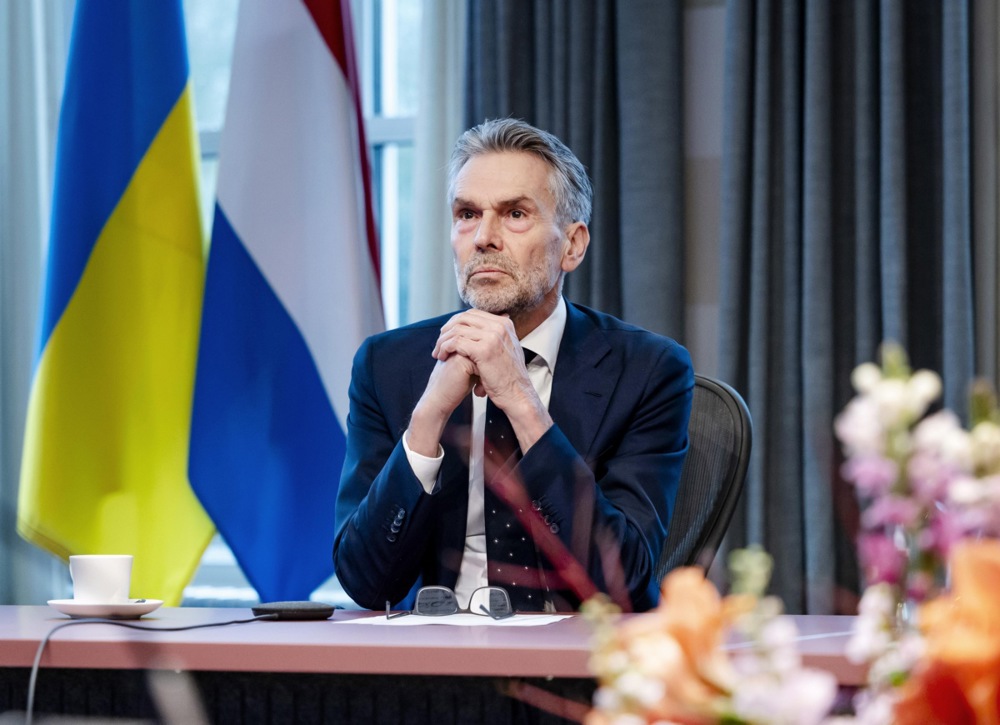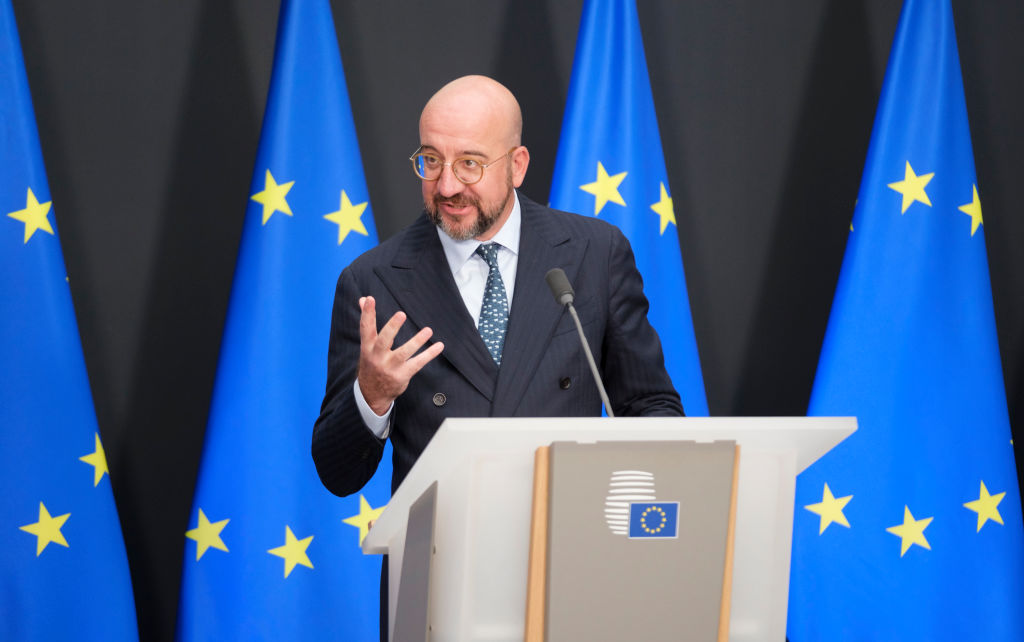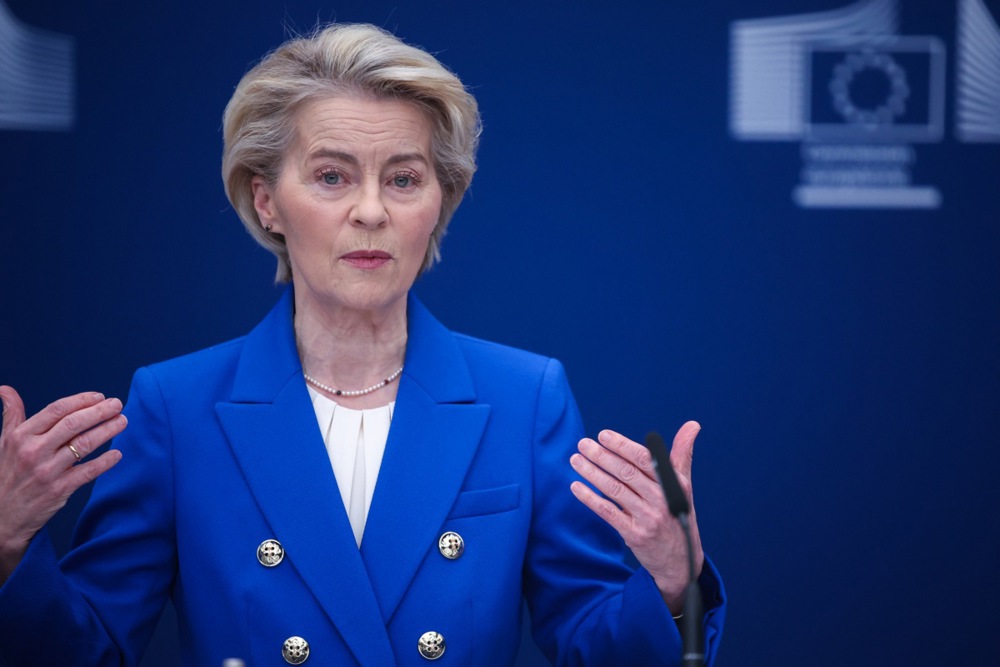The European Union is weighing joint borrowing mechanisms to bolster financial support for Ukraine in 2026 and 2027 amid mounting obstacles to its preferred but controversial scheme of leveraging frozen Russian assets.
The shift in focus comes as the bloc grapples with Ukraine’s projected €135.7 billion financing gap over the next two years. That is exacerbated by waning US commitments and the end of Kyiv’s International Monetary Fund programme in November 2027.
European Commission President Ursula von der Leyen outlined three principal options in a letter to EU governments on November 17: Direct grants from member states, a limited-recourse loan funded through EU borrowing on financial markets, or a reparations loan tied to the immobilised Russian assets.
The reparations loan, valued at €140 billion, would utilise approximately €176 billion in matured Russian Central Bank reserves held primarily by Belgium’s Euroclear. That would be out of more than €210 billion in frozen across the EU since Russia’s full-scale invasion in February 2022.
Under this model, the EU would borrow the funds from Euroclear, issuing bonds backed by member states, with Ukraine repaying only upon receiving reparations from Moscow post-conflict.
While legally defensible as borrowing rather than outright confiscation – aligning with international norms on sovereign immunity – the plan faces stiff resistance from Belgium. It demands shared legal and financial guarantees to shield against potential Russian lawsuits or demands for restitution.
Belgian Prime Minister Bart De Wever has vowed to veto the scheme without broader risk-sharing, citing Euroclear’s €183 billion exposure. He also pointed to the need for parallel action from other G7 nations holding the remaining €300 billion in frozen assets.
Hungary and Slovakia have also voiced opposition, complicating the unanimity required for EU sanctions and asset freezes.
French outlet Le Monde today reported that “the Commission has failed to find sufficient guarantees to offer Belgian financial institution Euroclear”, and “has not taken the trouble to discuss the plan in advance with Belgium”.
The proposal stalled at the October EU summit, with leaders opting instead for an EC assessment of alternatives, deferring a decision until December.
Complicating matters further is the new US peace blueprint, reportedly a 28-point plan under President Donald Trump. That envisions unblocking $100 billion (€86.5 billion) in Russian assets for a US-led reconstruction fund – with Europe contributing €100 billion.
Negotiated without EU input, this has “thrown the reparations loan into disarray”, officials close to European Council President António Costa claimed, prompting Brussels to accelerate contingency planning.
Joint borrowing emerges as the frontrunner among alternatives, echoing the €800 billion NextGenerationEU bonds issued during the Covid-19 pandemic, although without the same fiscal headroom in the EU’s multi-annual budget.
Von der Leyen pitched this publicly on November 13, emphasising it as a “common European approach” to sidestep legal uncertainties. It would, though, impose interest costs, potentially €25 billion over the loan term, on already debt-burdened nations such as France and Italy.
A third pathway involves bilateral grants or national borrowing coalitions but these risk fragmenting support and straining budgets amid domestic pressures.
Finance ministers meeting on November 13 deemed the Russian asset loan “most effective” and urged swift resolution. Von der Leyen warned that funds must flow by mid-2026 to avert a Ukrainian fiscal collapse.
Ukraine has welcomed the reparations concept but resists EU strings, such as ring-fencing funds for European arms or defence alone; Kyiv insists on flexibility for reconstruction, victim compensation and non-EU procurement.
The Kremlin has decried the asset plan as “illegal seizure”, vowing retaliation, while experts caution of the broader effects.
A full-scale seizure of Russia’s €210 billion in frozen central-bank reserves, rather than merely using the windfall profits they generate in Belgium, would cross a red line that has held since the modern international financial system emerged after the Second World War.
Sovereign assets deposited in western jurisdictions are effectively untouchable, even in wartime, unless the depositor state explicitly consents or loses a war and signs a peace treaty ceding them.
If the EU and G7 were to confiscate these reserves outright, central banks and sovereign wealth funds from Beijing to Riyadh, holding more than $12 trillion (€10.3 trillion) in foreign-exchange reserves globally, could conclude that dollar and euro-denominated assets were no longer safe from political expropriation.
One consequence could be accelerated diversification away from western currencies, a quiet fire-sale of euro- and dollar-denominated bonds – pushing up borrowing costs for European governments and companies – and a structural loss of confidence in custodians such as Euroclear and the Federal Reserve.
Market participants already price a small but non-zero “geopolitical risk premium” into European debt. Turning that premium into a permanent feature would raise long-term interest rates across the west, weaken the euro’s status as a global reserve currency and hand China and other non-Western powers a powerful propaganda tool to promote their own financial infrastructures as safer alternatives.





